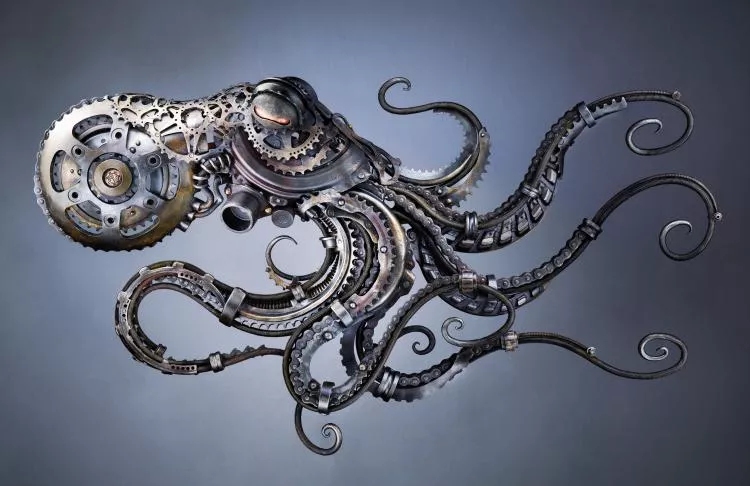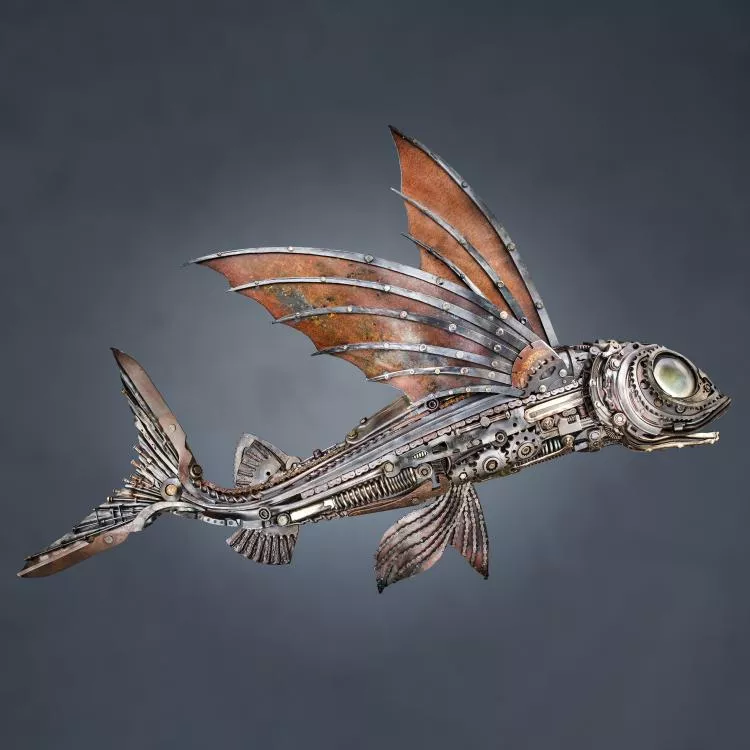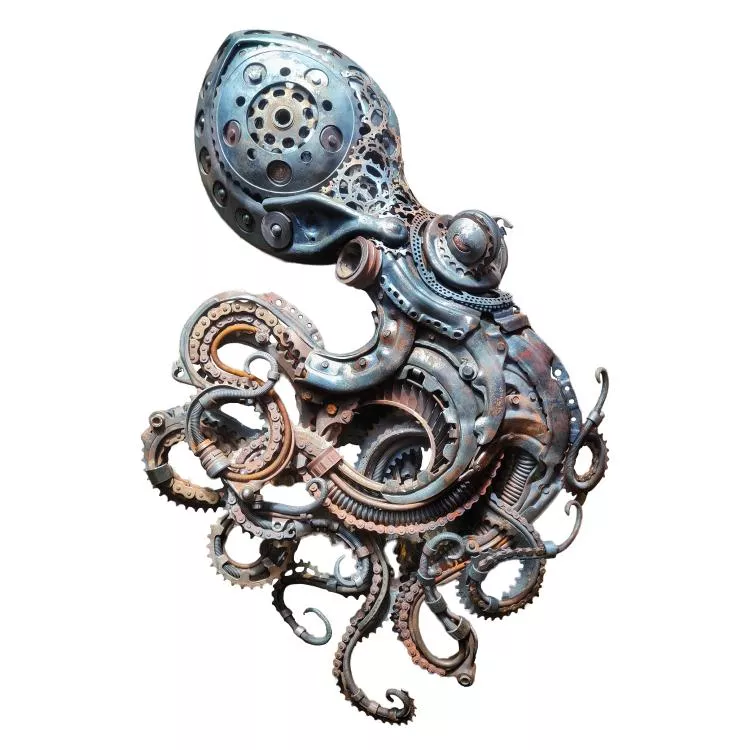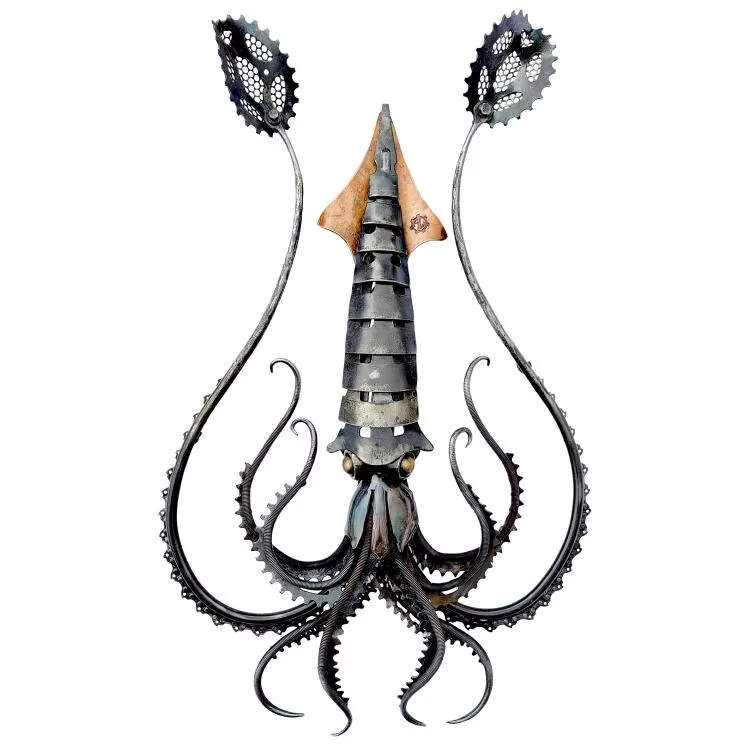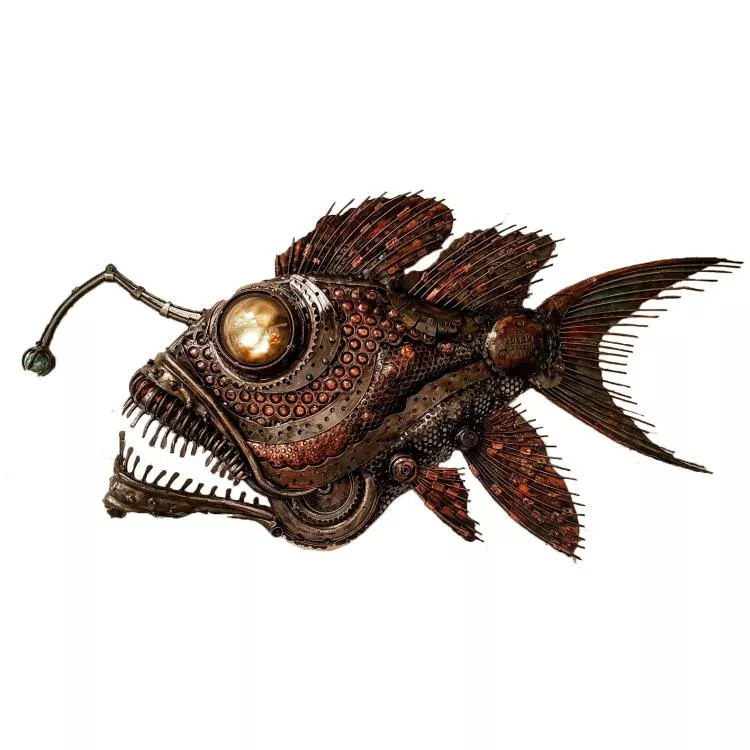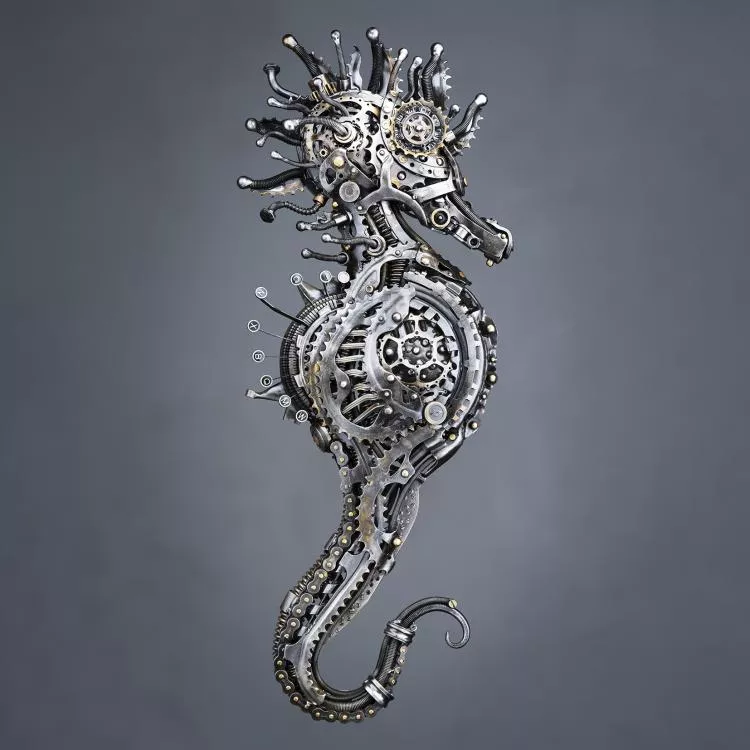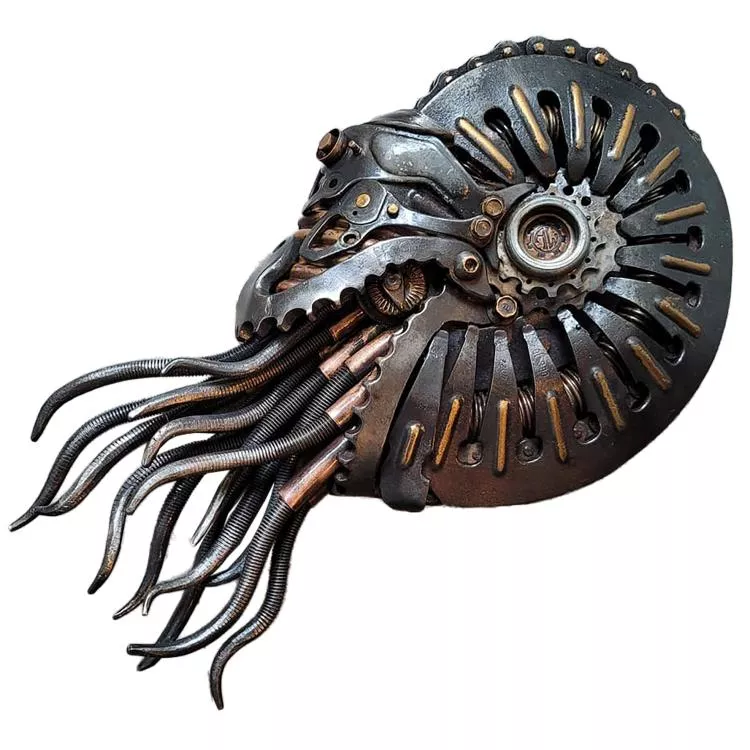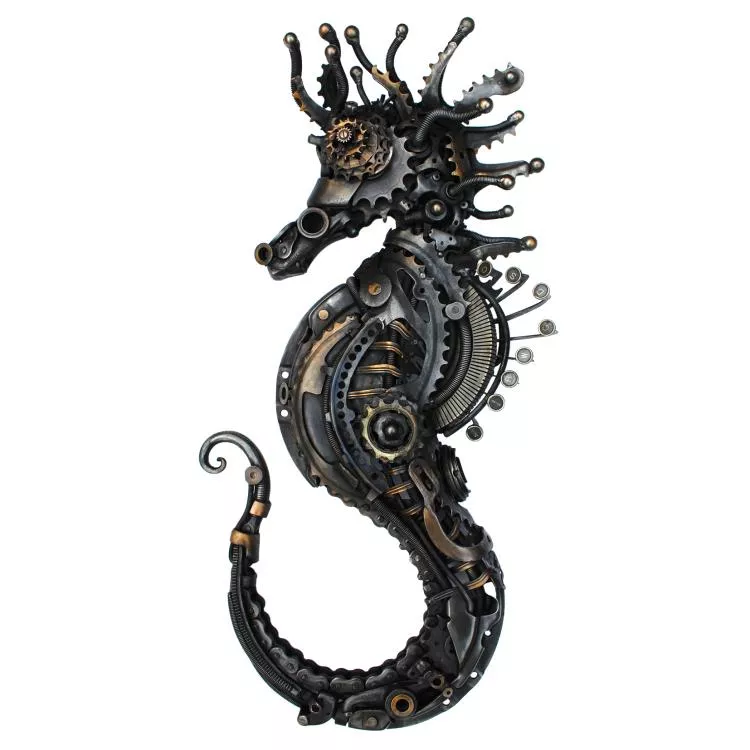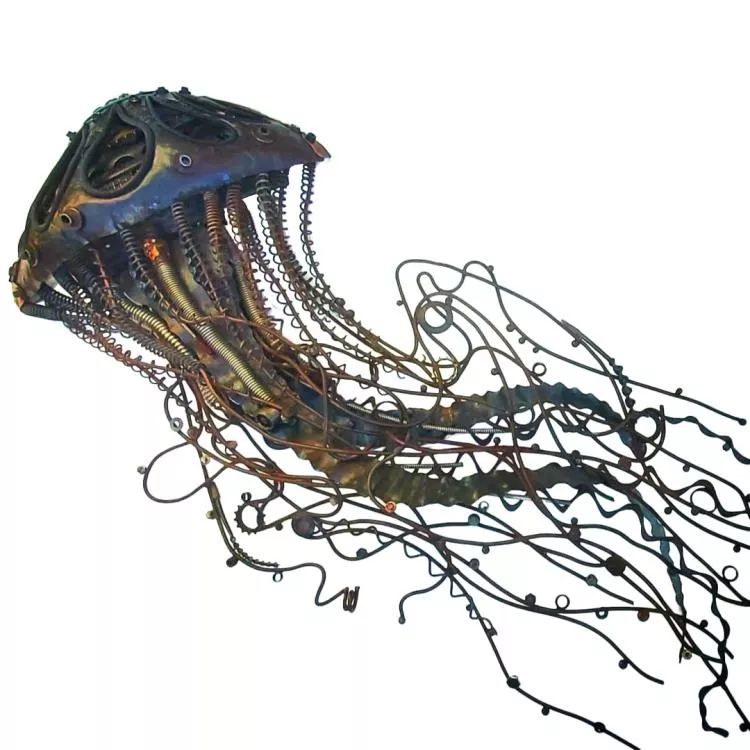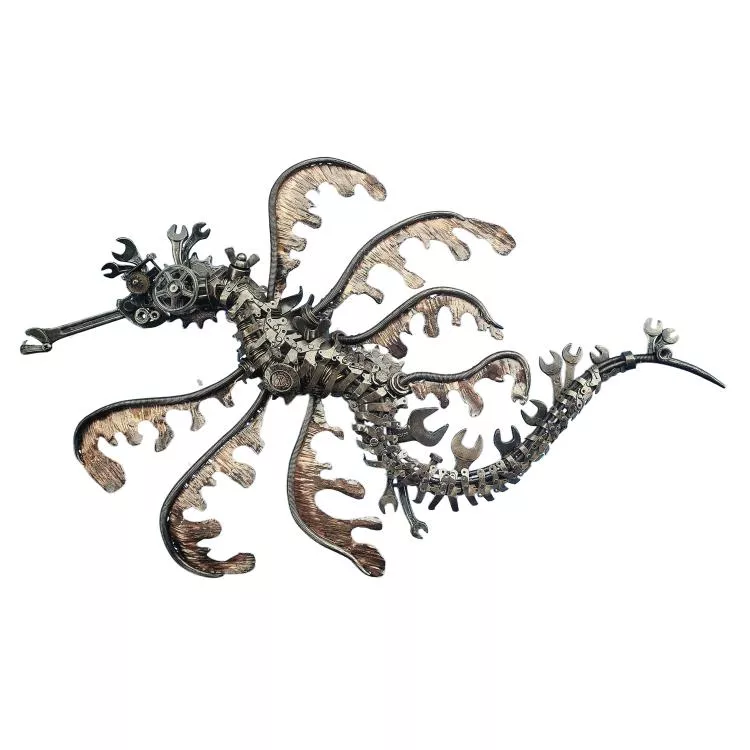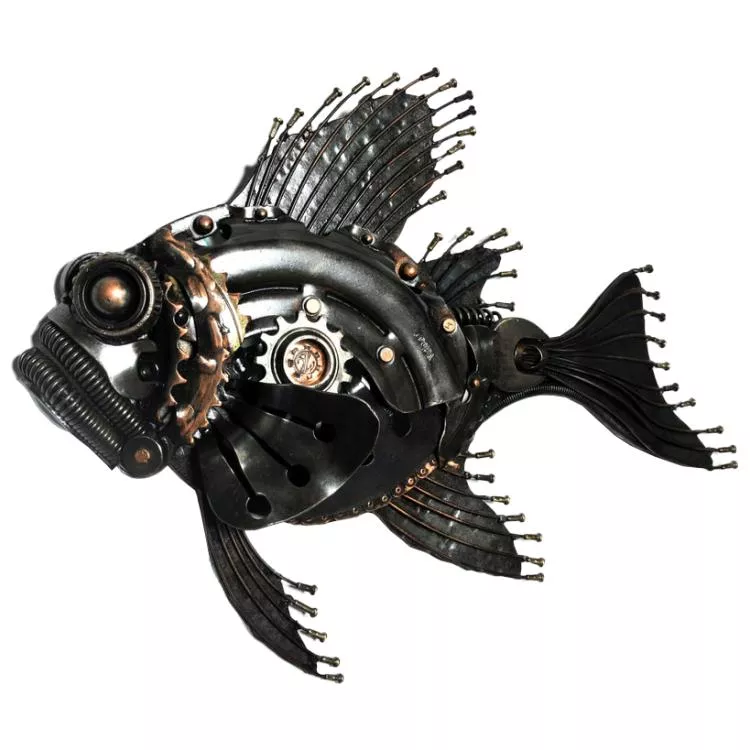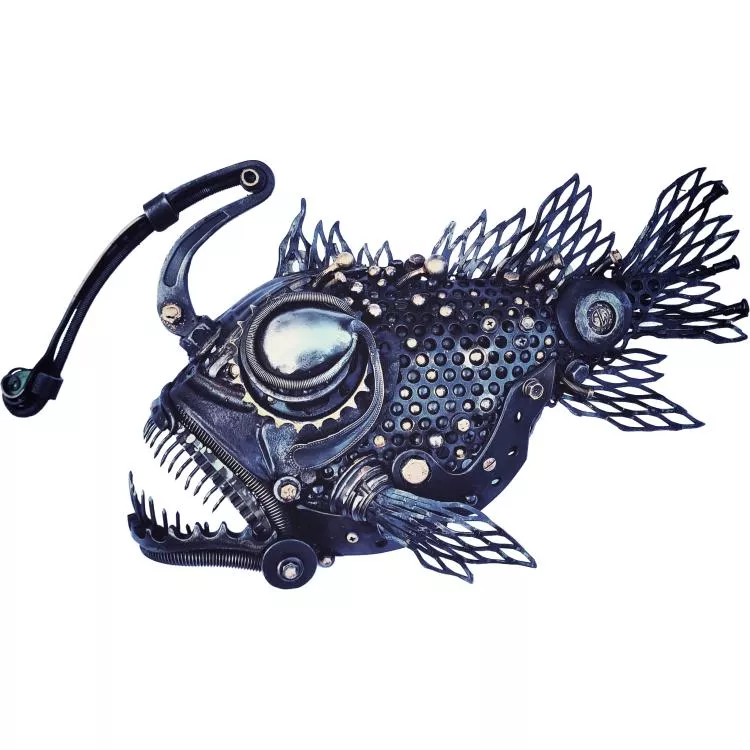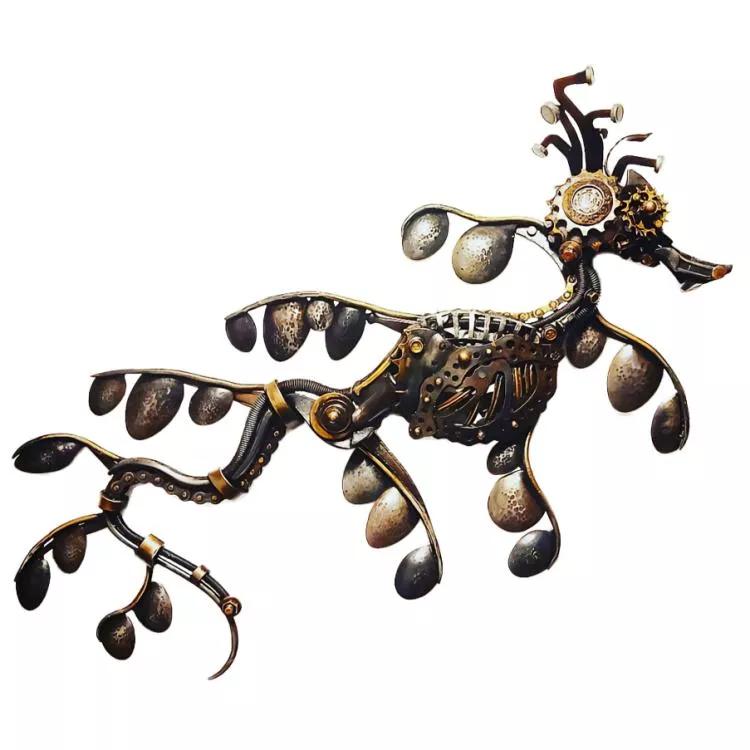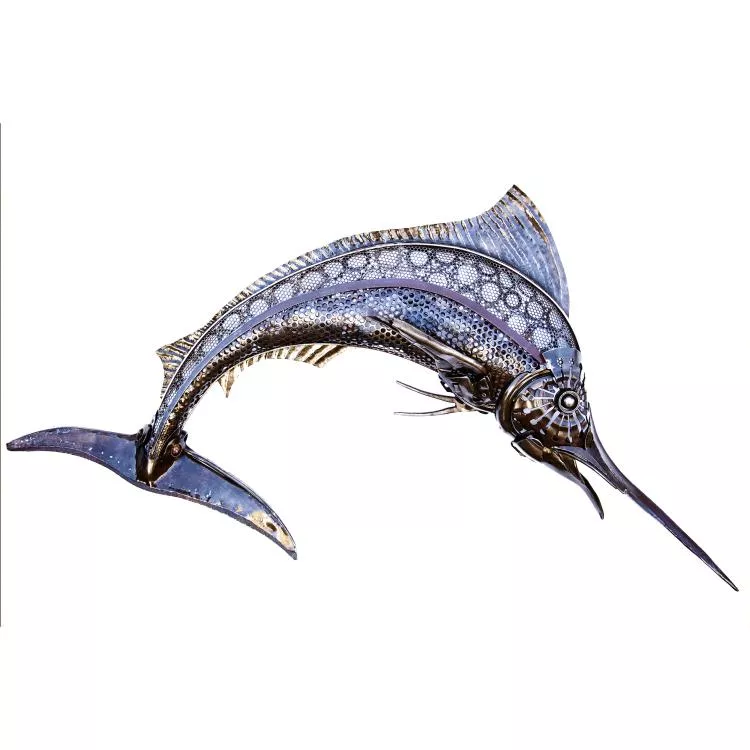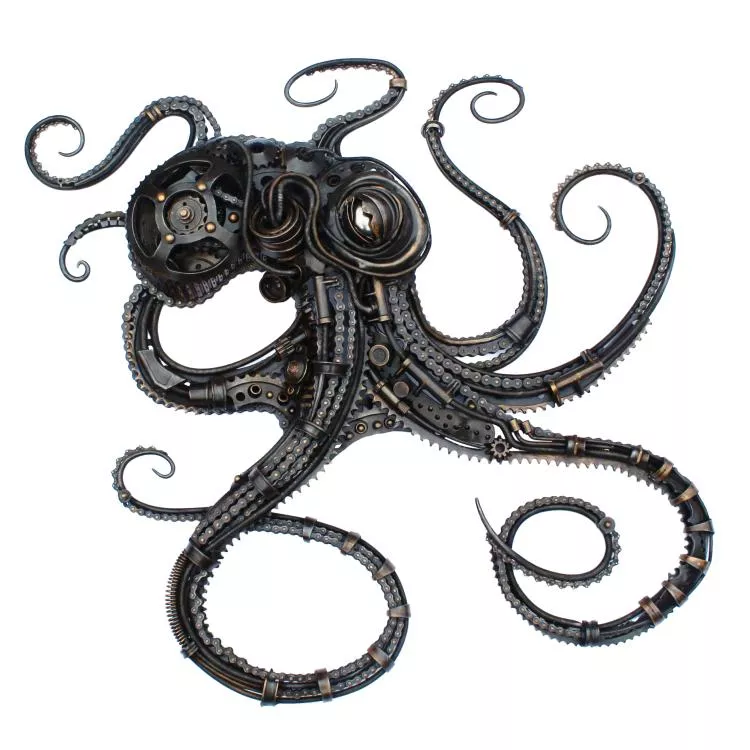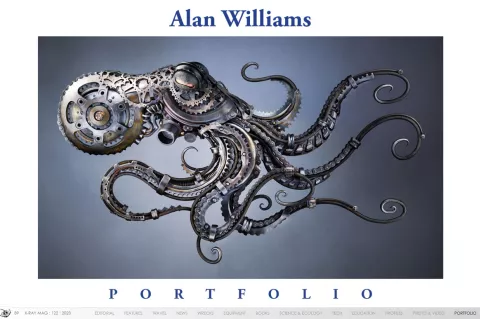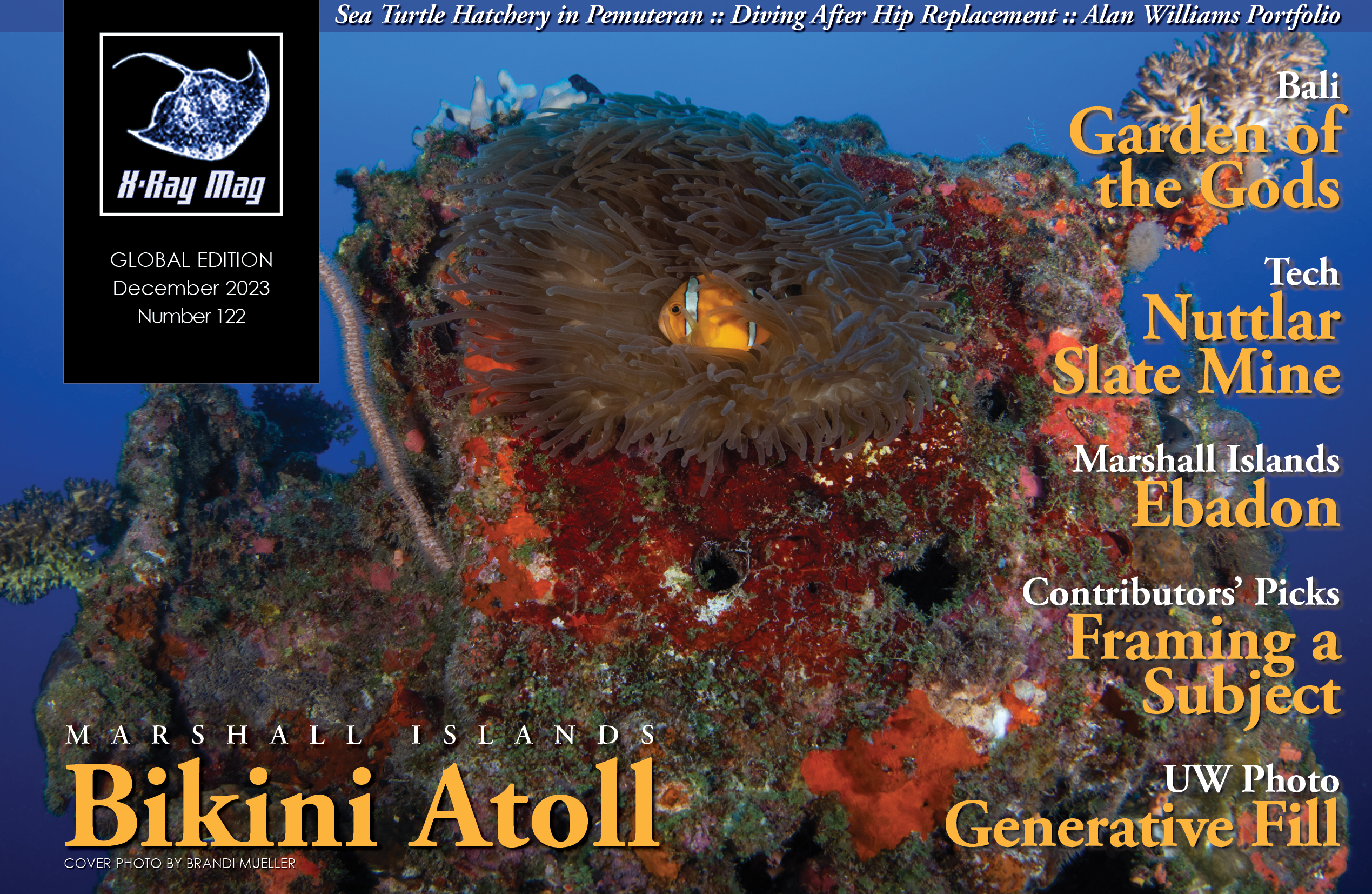Alan Williams, a British artist based in Brighton, creates astounding and intricate sculptures of marine life from found and upcycled metal objects. X-Ray Mag interviewed the artist to learn more about his creative process and perspectives.
Contributed by
X-RAY MAG: Tell us about yourself, your background and how you became an artist. Who or what has inspired you and your artwork and why?
AW: I have always had a fascination with the natural world, from the graceful beauty of birds and the spectacle of insects to the alien forms of nautical creatures.
As I grew up through the 1980s, my love for science-fiction and fantasy art in film and books inspired my imagination. I loved the darkness of the work of H.R. Giger, and the illustrative cartoon fantasy art of Rodney Matthews, to name but a few.
Another big inspiration was the Art Nouveau movement of the early 20th century. I loved the stylised shapes and movement in the depictions of nature, which was later to heavily influence my work.
I studied three-dimensional art and design up to degree level in college, with a focus on working with wood and metal. After graduating, I was desperate to get my own workshop. I had quite a few failed attempts at setting up in business—a learning experience I always reference when giving talks at colleges and universities. Finally, I began working with a blacksmith, and spent several years learning this ancient craft before getting certified by the Worshipful Company of Blacksmiths in London.
Alongside the more mundane metalwork jobs I had, I always kept my art going on the side. After seven years in the ironwork industry, I made the leap to focus on my artwork full-time. It was at this point I started to really refine my style, craftsmanship and the quality of the work I was producing.
X-RAY MAG: What is your artistic method or creative process?
AW: The skills I learnt from my blacksmithing days still form the basis of how I create each piece. Every component is heated in the forge, hammered, bent, twisted and shaped to transform it (even if subtly) away from its original form. Yet, for me, it is important for it to continue to retain its origins and heritage, such as keeping the maker’s marks, logos and branding visible.
The components are then added to the sculpture, with the welding and bolting concealed within the final piece (a process that is difficult to execute, as well as being counterintuitive from a sculpting point of view). This way of working aims to give my sculptures a visually rich and unique look, which I hope sets my work apart from other artists working in this medium.
X-RAY MAG: Why marine life and themes inspired by the sea? How did you come to these themes and how did you develop your style of sculpture?
AW: For the last few years, a huge focus of my work has centred on cephalopods, from squid and cuttlefish to octopuses and nautilus. In my mind, there are no other creatures on earth as fascinating and intelligent. Their beauty and emotions are both hidden and visible at the same time. The more I see, hear and read about them, the more I am blown away by these majestic beings. Octopuses, in particular, are a great source of inspiration. I would happily spend the rest of my days paying homage to them through my art.
X-RAY MAG: In your relationship with reefs and the sea, where have you had your favourite experiences?
AW: I have had several opportunities to explore the coral reefs, including those in Egypt and Thailand. Tragically, on one visit to the Surin Islands in 2014, the coral reef had been bleached by a rise in temperature. It was quite a devastating sight to behold. The reef looked like an underwater ghost town.
It was reported in 2019, however, that the coral was starting to return. I hope that the vast numbers of schooling fish, turtles, sharks, rays and other aquatic visitors do too. I look forward to going back to see them again.
X-RAY MAG: What are your thoughts on ocean conservation and coral reef management and how does your artwork relate to these issues?
AW: I create my pieces from used, discarded and scrap metal. Reusing, recycling and issues around environmental sustainability are at the heart of my work. I feel that creating animal sculptures with these materials helps to deliver and emphasise the narrative about the preservation of the natural world. The elimination of pollution from our oceans and rivers is of the highest priority for us, as humans, in our attempts to reverse some of the damage we have imposed on our planet.
I find these materials inspiring for how they influence the design and aesthetic of a sculpture—from the repetitive, rhythmic shapes of cogs and gears, which emulate the sinuous arms and suckers of an octopus, to the use of spoons and forks to create the different feather plumages on birds. Other materials I use in my creations range from bicycle chains, car clutches, mechanical salvage, retired tools—and anything else I can get my hands on and weld together. ■
To see a one-minute video of the artist at work on his sculpture, The Making of an Octopus, go to: youtube.com/watch?v=iPNfyKcDsJE.
For more information or to purchase artwork, please visit the artist’s website at: alanwilliamsmetalartist.com. Or follow on Facebook, Instagram and YouTube @AlanWilliamsMetalArtist.

